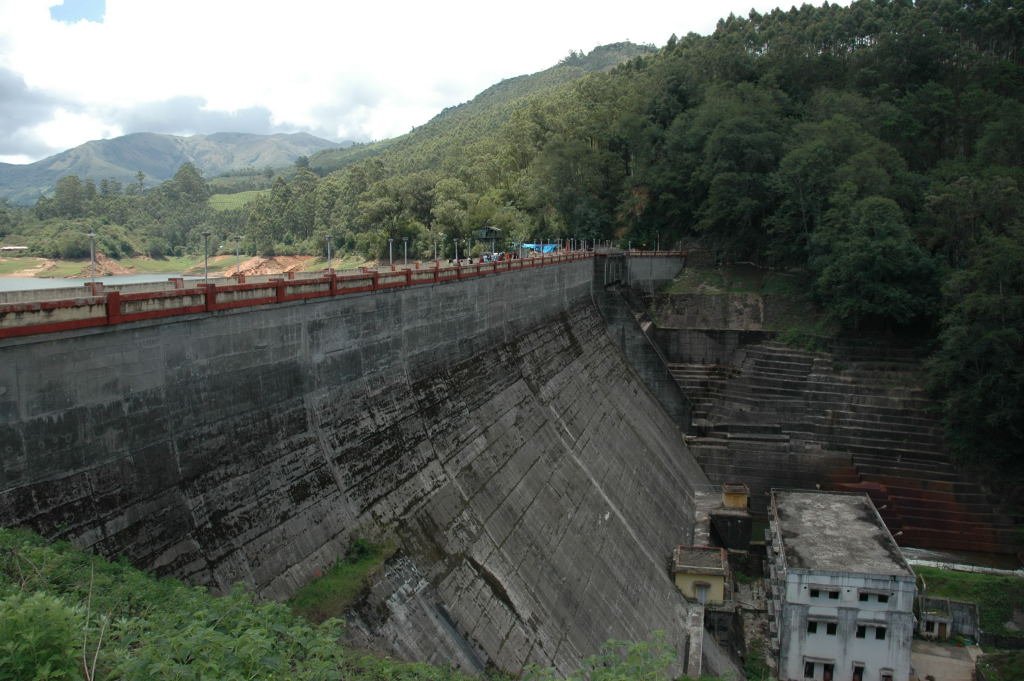
Visiting Mattupetty Dam: Hours, Tickets, and Tips
Date: 17/07/2024
Introduction
Discover the captivating allure of Mattupetty Dam, nestled in the picturesque hills of Munnar, Kerala, India. This comprehensive guide delves into the history, economic significance, cultural importance, and ecological impact of the Mattupetty Dam. Constructed in the late 1940s under the Pallivasal Hydro-Electric Project, Mattupetty Dam stands as a testament to mid-20th-century engineering prowess, primarily serving hydroelectric power generation and irrigation (Kerala Tourism).
As a vital infrastructure project, the dam has transformed the local landscape, supporting agriculture, dairy farming, and the local economy. Beyond its functional roles, Mattupetty Dam has become a prominent tourist attraction, drawing visitors for its serene beauty, boating activities, and the unique ecological environment it fosters (Munnar Tourism). This guide aims to provide potential visitors with all the essential information, including visiting hours, ticket prices, travel tips, and nearby attractions, ensuring a memorable and well-prepared visit.
Table of Contents
- Introduction
- History and Significance of Mattupetty Dam
- Economic and Agricultural Significance
- Hydroelectric Power Generation
- Visitor Information
- Ecological and Environmental Impact
- Tourism and Recreational Activities
- Cultural and Social Significance
- Conservation and Sustainability Efforts
- Challenges and Future Prospects
- FAQ
- Conclusion
History and Significance of Mattupetty Dam
Historical Background
The Mattupetty Dam, located in the picturesque hill station of Munnar in Kerala, India, is a concrete gravity dam constructed in the late 1940s. Built under the Pallivasal Hydro-Electric Project, the primary purpose of the dam was to conserve water for hydroelectric power generation and irrigation. The dam’s reservoir, known as the Mattupetty Lake, was created by impounding the waters of the Muthirapuzha River, a tributary of the Periyar River.
Engineering Marvel
The Mattupetty Dam stands as a testament to the engineering prowess of the mid-20th century. The dam is approximately 83.35 meters high and 237.74 meters long, with a storage capacity of 55.4 million cubic meters. The reservoir spans an area of about 323 hectares, providing a substantial water body that supports various activities and ecological functions.
Economic and Agricultural Significance
The Mattupetty Dam plays a crucial role in the local economy and agriculture. The water stored in the reservoir is used for irrigation, benefiting agricultural lands in the surrounding areas. This has transformed the agrarian landscape, enabling the cultivation of various crops, including tea, cardamom, and other spices, which are integral to the region’s economy. The dam also supports the local dairy industry by providing water for cattle rearing.
Hydroelectric Power Generation
One of the primary purposes of the Mattupetty Dam is hydroelectric power generation. The dam is part of the Pallivasal Hydro-Electric Project, which has a total installed capacity of 37.5 MW. The hydroelectric power generated by the dam is a vital source of renewable energy for the region, contributing to the state’s electricity grid and promoting sustainable development.
Visitor Information
Visiting Hours and Tickets
- Visiting Hours: The Mattupetty Dam is open to visitors from 9:30 AM to 5:00 PM daily.
- Ticket Prices: The entry fee for adults is INR 10, and for children, it is INR 5. Boating tickets are available at additional costs, depending on the type of boat chosen.
Travel Tips
- Best Time to Visit: The best time to visit Mattupetty Dam is from September to May when the weather is pleasant and ideal for sightseeing and outdoor activities.
- How to Get There: The dam is located about 13 kilometers from Munnar town. Visitors can hire a taxi or take a local bus to reach the dam.
- Nearby Attractions: Combine your visit to Mattupetty Dam with nearby attractions such as Echo Point, Kundala Lake, and Top Station for a complete Munnar experience.
Ecological and Environmental Impact
The Mattupetty Dam and its reservoir have created a unique ecological environment that supports a diverse range of flora and fauna. The reservoir is home to various species of fish, making it a popular spot for angling and fishing activities. The surrounding areas are rich in biodiversity, with numerous species of birds, animals, and plants thriving in the region.
Tourism and Recreational Activities
The Mattupetty Dam is a major tourist attraction in Munnar, drawing visitors from all over the world. The serene and scenic beauty of the reservoir, surrounded by lush green hills and tea plantations, makes it a popular spot for picnics, boating, and nature walks. The Kerala Tourism Development Corporation (KTDC) operates boating facilities on the reservoir, offering tourists an opportunity to enjoy the tranquil waters and picturesque landscapes.
Cultural and Social Significance
The Mattupetty Dam holds cultural and social significance for the local communities. The dam and its reservoir are integral to the daily lives of the people, providing water for domestic use, agriculture, and livestock. The dam has also become a symbol of the region’s development and progress, representing the successful harnessing of natural resources for the benefit of the community.
Conservation and Sustainability Efforts
Efforts have been made to ensure the conservation and sustainability of the Mattupetty Dam and its surrounding environment. The Kerala State Electricity Board (KSEB) and other local authorities have implemented measures to maintain the dam’s structural integrity and manage the reservoir’s water levels. Environmental conservation programs have been initiated to protect the biodiversity of the region, including afforestation projects and wildlife protection initiatives.
Challenges and Future Prospects
Despite its numerous benefits, the Mattupetty Dam faces several challenges, including sedimentation, water pollution, and the impact of climate change. Sedimentation reduces the reservoir’s storage capacity, affecting its efficiency in water conservation and power generation. Water pollution from agricultural runoff and other sources poses a threat to the aquatic life and overall water quality. Climate change impacts, such as altered rainfall patterns and increased frequency of extreme weather events, also pose risks to the dam’s operations and sustainability.
To address these challenges, ongoing research and development efforts are focused on improving sediment management, enhancing water quality monitoring, and implementing climate-resilient infrastructure. The future prospects for the Mattupetty Dam include the potential for expanding its hydroelectric capacity, promoting eco-tourism, and integrating advanced technologies for better resource management.
FAQ
What are the visiting hours for Mattupetty Dam?
The dam is open to visitors from 9:30 AM to 5:00 PM daily.
How much is the ticket for visiting Mattupetty Dam?
The entry fee is INR 10 for adults and INR 5 for children. Additional charges apply for boating activities.
What is the best time to visit Mattupetty Dam?
The best time to visit is from September to May.
How can I reach Mattupetty Dam?
The dam is approximately 13 kilometers from Munnar town. Visitors can hire a taxi or take a local bus to reach the dam.
Conclusion
Mattupetty Dam is a vital infrastructure project with significant historical, economic, ecological, and cultural importance. Its contributions to hydroelectric power generation, agriculture, tourism, and environmental conservation make it a cornerstone of the region’s development and sustainability. Continued efforts to address challenges and promote sustainable practices will ensure that the dam remains a valuable asset for future generations. Plan your visit today and explore the rich history and natural beauty of Mattupetty Dam. For more information, follow our updates and check out related articles on our website (Kerala Tourism, Munnar Tourism).
References
- Kerala Tourism, 2024, Kerala Tourism Development Corporation keralatourism.org
- Munnar Tourism, 2024, Munnar Tourism Development Authority munnartourism.co.in


